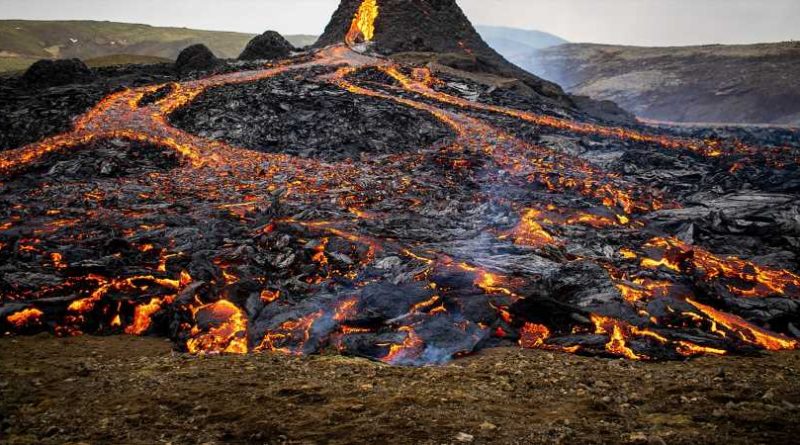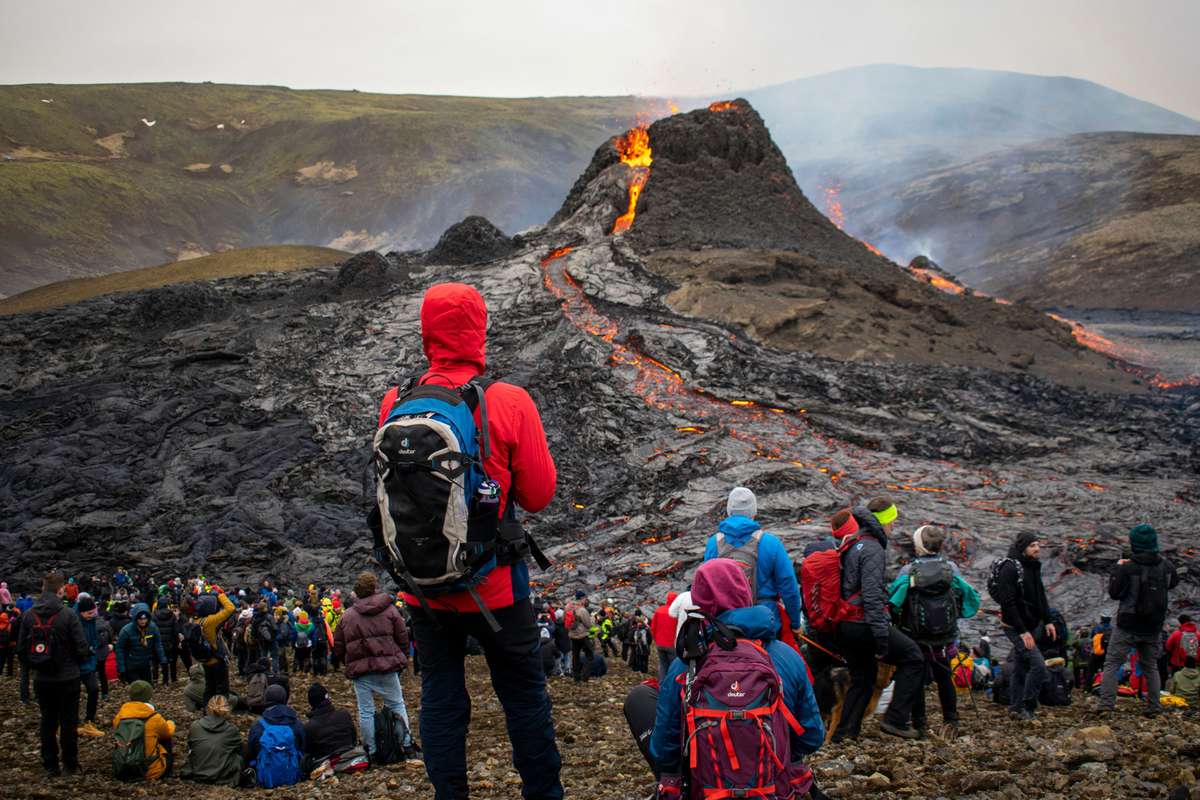This Long-dormant Volcano in Iceland Is Erupting — See the Stunning Photos
The Land of Fire and Ice is truly living up to its nickname these days. On Friday night, a volcano erupted on Reykjanes Peninsula, where Iceland's main airport, Keflavik International Airport, is located.
With more than 50,000 earthquakes taking place in the weeks prior, Iceland had been predicting a natural event like this, according to BBC. The Icelandic peninsula hadn't seen an eruption in 781 years, the Associated Press reported.
The lava first burst through around 8:45 p.m. local time, as seen from a web camera directed at Geldingadalur, near Fagradalsfjall, according to the Icelandic Meteorological Office. "The weather on the peninsula is wet and windy, and an orange glow can be seen in low clouds on the horizon from Reykjanesbær and Grindavík," the office's first report read, specifying that the location was in a valley about three miles from the peninsula's southern coastline. That night, images were captured of the magma causing a red cloud in the night sky.
While the main road from the capital to the airport was initially closed, it reopened the next morning. The flight warnings were also lowered, since there was "no indication of production of ash and tephra [rock fragments] and no imminent hazard for aviation." The eruption itself was deemed "small," yet the area is "considered very dangerous" because of possible sudden lava outbreaks, unstable craters, and potential explosions. By Saturday afternoon, the office noted: "The eruption in Geldingadalur is not large, so it looks like gas pollution from the volcanoes will have little effect on the well-being and health of the inhabitants of the Reykjanes Peninsula and the capital area." According to the AP, the volcano has continued to get "smaller."
Over the weekend, hikers flocked to the area to take in the eruption. "I can see the glowing red sky from my window," Rannveig Gudmundsdottir, a resident of nearby Grindavik, told Reuters. "Everyone here is getting into their cars to drive up there."
In total, the fissure was about 1,640 to 2,640 feet wide, with lava spewing as high as 328 feet, the meteorological office's Bjarki Friis told Reuters.
Unlike the 2010 volcanic eruption of Eyjafjallajökull in Iceland, which released so much ash that the airspace around Europe was impacted, flights were not directly affected by this event.
Source: Read Full Article





